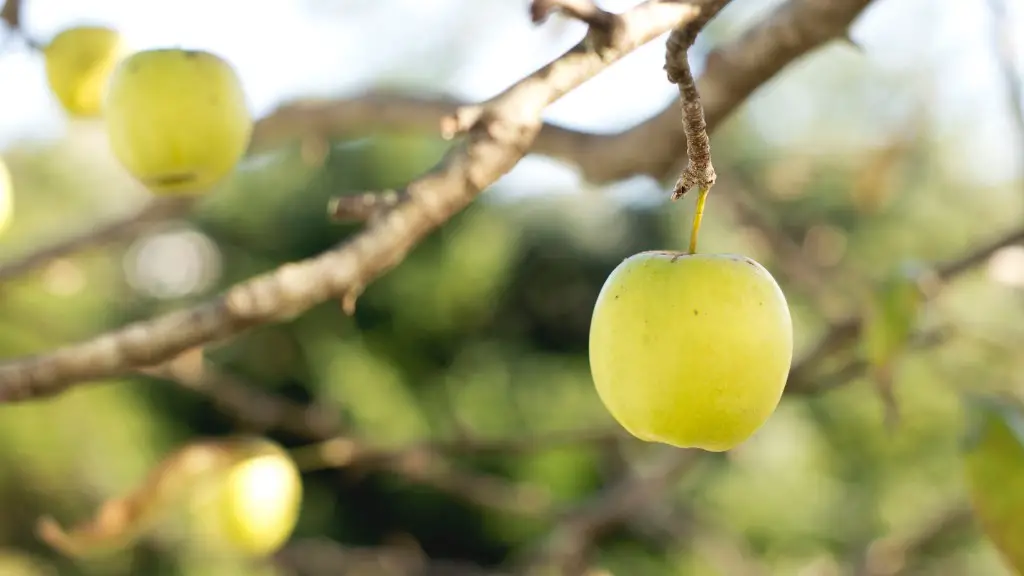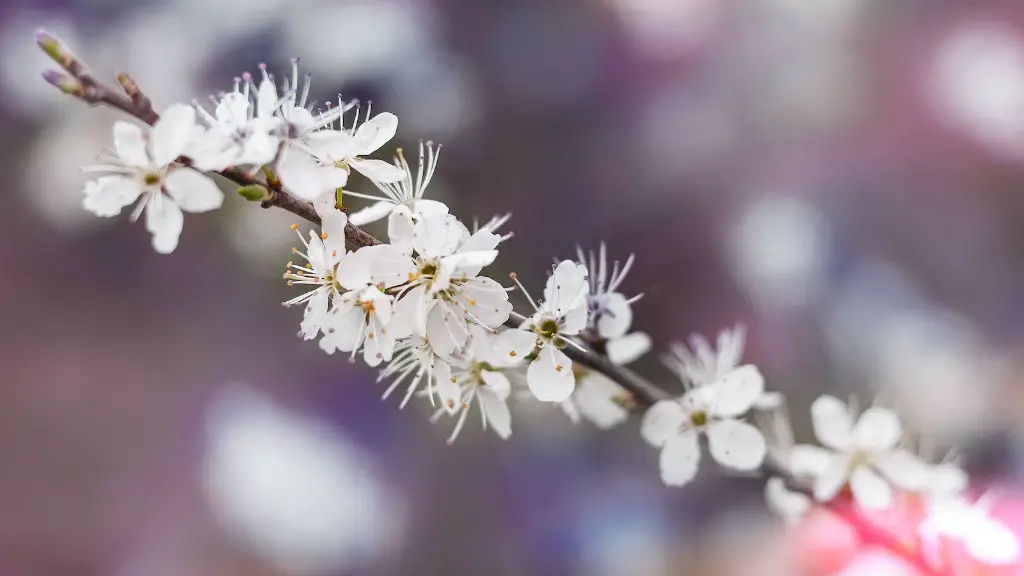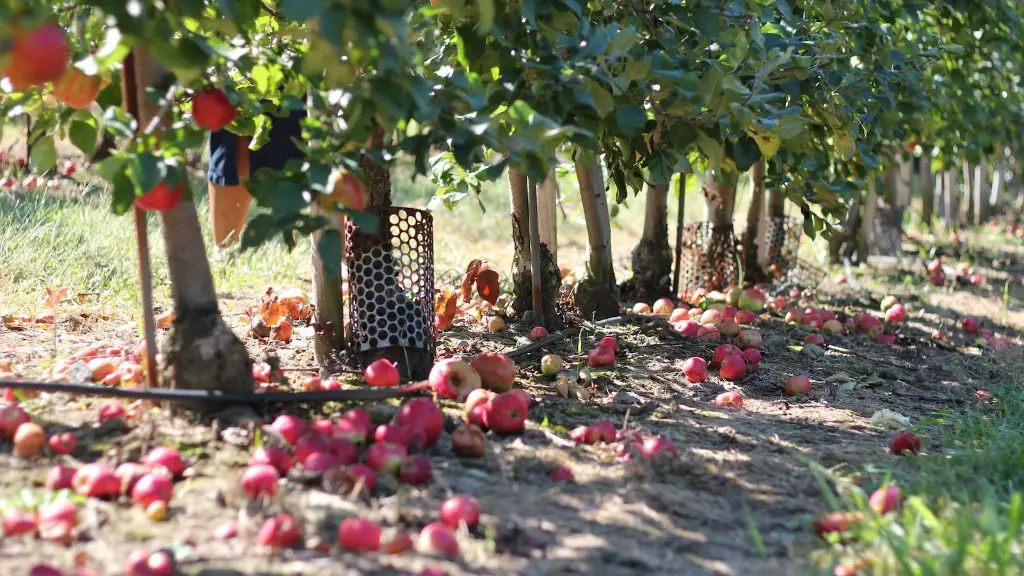The Fuji apple tree is one of the most popular varieties of apples, due to its sweet flavour and crunchy texture. The tree is highly reliant on pollination for a successful harvest. The process involves transferring of pollen from the male parts of the flower (stamen) to the female parts (pistil) of the flower on a different branch of the same tree, which then results in apple production. This transfer can take place through wind, rain, birds, insects, and other natural means. Out of these, insect pollination has proven to be the most efficient.
Insect pollination of the Fuji apple tree is typically handled by honey bees. However, other species, such as bumblebees, hoverflies and solitary bees, can also be involved. Honeybees are particularly effective because they are able to fly from one apple flower to another and distribute the pollen more efficiently than other insects. They also tend to fly within a radius of flying from 3-4 kilometers from the pollination site.
The process of insect pollination also requires other plants to be present in the vicinity. This is because the insects not only feed on the Fuji apple tree’s nectar and rest on its branches but also need other plants to sustain their own population. The presence of wild flowers, weeds, and crop plants nearby can encourage insect activity in the Fuji apple tree.
The insect pollination of the Fuji apple tree is also beneficial for farmers and gardeners because the process can naturally increase their yields. This is because the trees will produce larger and juicier apples if they are properly pollinated. Moreover, manual or machine pollination can be expensive and labour intensive, making insect pollination a cost-effective and long-term solution.
In order to encourage insect activity and promote pollination, farmers and gardeners should leave a certain amount of weeds and wild flowers around the trees. As the Fuji apple trees are deciduous, they should also be pruned regularly to increase airflow and allow insects to reach more of the flowers. Lastly, they should also provide nesting sites and water sources for their insect helpers, such as bee houses, birdbaths, and shallow dishes of water.
The Benefits of Pollination
Insect pollination offers a number of benefits to Fuji apple trees. As mentioned earlier, it can improve the size and quality of the apples, which can potentially translate into a larger harvest. It can also help to boost biodiversity in the area, as insect populations will continue to thrive and other wildlife will be able to take advantage of their presence. Moreover, it reduces the reliance on chemical fertilizers, pesticides, and other synthetic inputs that can be harmful to the environment.
Insect pollination is also beneficial for commercially produced Fuji apples, as the presence of pollen on their skins ensures that the apples will not deteriorate as quickly. This increased shelf life means that the apples can be harvested earlier and shipped further distances before they become overripe. This can help to reduce transportation costs and enable producers to reach consumers in other countries.
In addition, insect pollination can also help to reduce the need for manual labour in commercial orchards. By relying on natural processes, labor costs can be cut in the long run. This can also help to reduce costs for consumers, as higher yields on the farm will translate into lower prices in the market.
The Challenges of Pollination
Despite the many benefits of insect pollination, it can also be a challenge for farmers. This is because there is always the risk that the insects will spread diseases and parasites from one tree to another. Furthermore, bees and other insects can be affected by environmental changes, meaning that pollination can be less effective during extreme weather conditions or periods of drought.
Moreover, the presence of honey bees can also threaten other harvested products. For example, if honey bees are attracted to the Fuji apple tree, then they can also feed on other crops grown nearby. This can increase costs for farmers who have to invest in pest control solutions to limit the spread of damage.
The other challenge is that insect pollination is not always consistent. For example, some years may be more successful than others and this variability of pollination can make it difficult to predict future yields. Hence, farmers may have to make frequent adjustments to their management strategies in order to ensure a successful harvest.
Conclusion
In conclusion, insect pollination of a Fuji apple tree is a natural process that can result in increased yields, improved shelf life, and decreased costs for farmers. However, it is not without its challenges, as pest control and environmental factors can affect the efficiency of pollination. Nevertheless, if managed correctly, insect pollination can be an effective and sustainable way to increase productivity on the farm.



